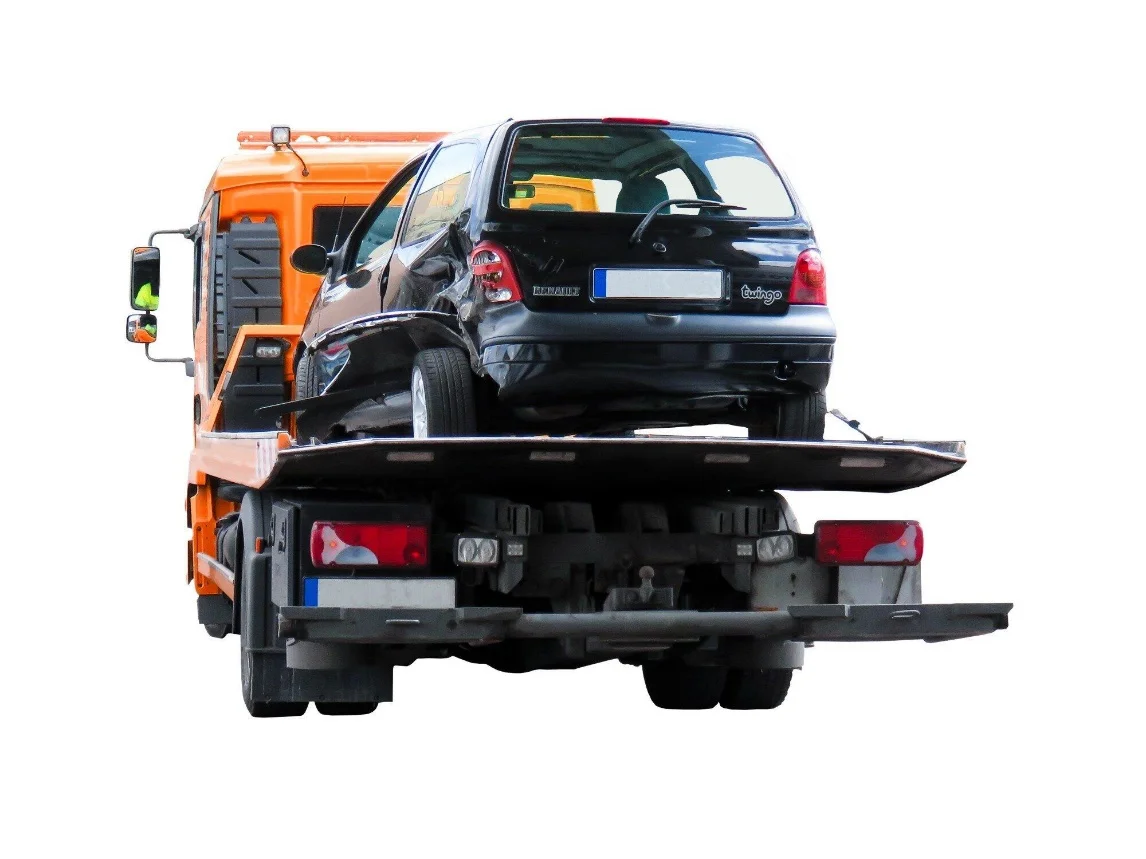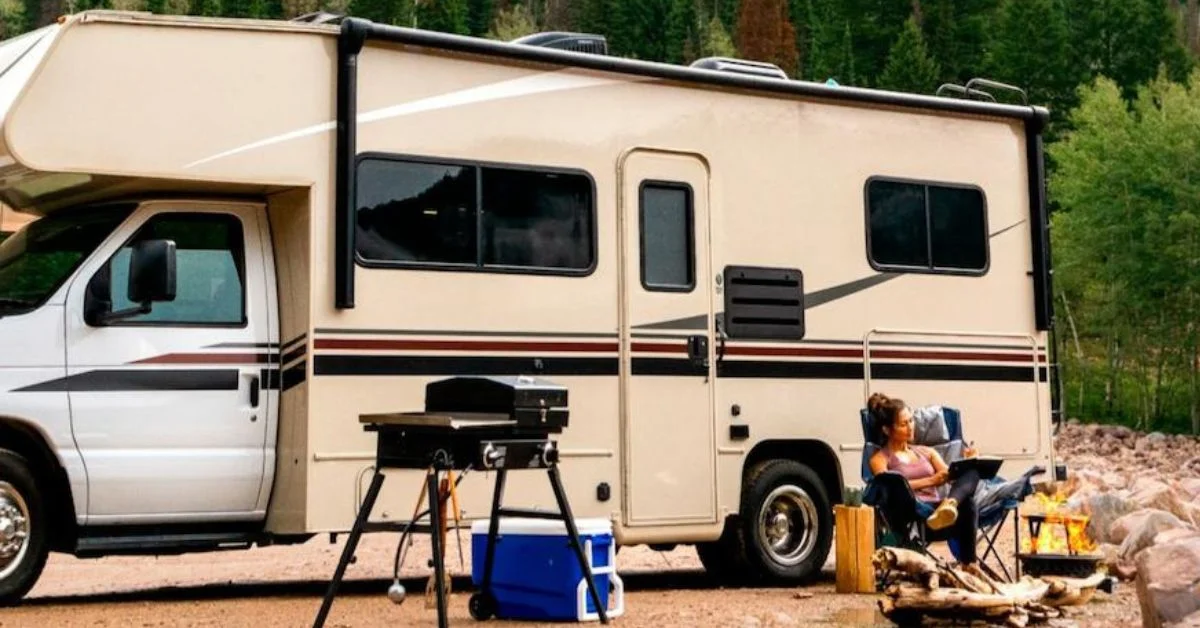AUTOMOTIVE
Leasing vs Buying a Car: A Detailed Comparison

Buying or leasing a car is a big decision affecting your lifestyle and budget. The ideal solution will depend on your unique needs, driving style, and financial circumstances. Both have clear benefits and cons. To assist you in making an informed choice, this article will offer a thorough comparison.
Leasing a Car: Flexibility and Modernity
Leasing a car for a set amount of time—usually two to four years—is similar to leasing one. Although you do not own the car, you pay monthly to utilize it. You have three options when your lease expires: return the vehicle, purchase it for a set amount, or lease a new one.
One of the main attractions of leasing is the ability to drive a new car every few years without dealing with the hassle of selling an old one. Leased cars are usually under warranty, which means lower repair costs. Additionally, monthly lease payments are typically lower than loan payments for buying a car, making this an attractive option for people who prefer driving newer models but are on a budget. However, leasing comes with mileage limits and you might face hefty fees if you exceed these limits or return the car with damage beyond normal wear and tear. For a diverse selection of vehicles, including options that might fit well with different leasing preferences, you can check the Long Beach auction inventory.
Buying a Car: Ownership and Freedom
Purchasing a car, whether new or used, means it belongs to you once you’ve paid off the car loan. The primary benefit of buying is the freedom of ownership: you can drive as much as you like, customize the vehicle to your liking, and sell it whenever you choose. While buying a car requires a higher upfront payment or larger monthly payments than leasing, you’ll own an asset that can be sold or traded in the future. Over time, owning a car is typically less expensive than leasing several cars over the same period, especially if you keep your vehicle well-maintained and for many years after your loan payments have ended. However, owners are responsible for all repair costs once the warranty expires, which can add up, especially as the car ages.
If the auto loan is repaid regularly and on schedule, buying a car offers a chance to establish credit. Those who want to improve their credit profile may find this feature especially helpful. In addition, it eliminates the potential stress and limits that come with leasing agreements, like mileage caps and personalization restrictions, giving customers a sense of long-term value and control. Furthermore, while purchasing a car, buyers have the choice to go with certified pre-owned or used cars, which enables them to get a car at a substantially lower cost than new models, which lose value quickly in the first few years of ownership. For consumers on a tight budget, this option is a prudent financial decision because it reduces both the initial outlay and the effects of depreciation.
Financial Considerations
When deciding between leasing and buying, it’s crucial to evaluate your financial situation. Leasing can be more appealing if you enjoy driving a new car every few years and want to avoid the depreciation that comes with buying. However, it’s important to consider the total lease costs, including fees, taxes, and penalties for over-mileage or damage. Buying a car is typically more cost-effective in the long run, particularly if you plan to keep the vehicle for a long time. While the initial costs and monthly payments are higher, you gain equity in the vehicle. Also, car loans have become more flexible, with terms that can stretch up to 84 months, making monthly payments more manageable for buyers.
When purchasing a car, it’s critical to take into consideration the entire cost of ownership, which encompasses not just the purchase price and loan interest but also the costs of fuel, insurance, maintenance, and depreciation. Knowing these expenses will enable you to make an informed decision about whether purchasing an automobile will ultimately fit into your budget. It’s a good idea to take the vehicle’s resale value into account as well; certain makes and models keep their worth better than others, thus providing a bigger return if you ever decide to sell or trade it in. This factor should be taken into consideration when making decisions as it has the potential to greatly reduce ownership costs. Making an informed purchasing selection that fits your demands and budgetary objectives can be achieved by doing extensive research and comparing the pricing of various models.
Lifestyle and Usage
Your lifestyle and how you use your car should also influence your decision. Buying may be the better option if you drive a lot, particularly over 15,000 miles per year due to the mileage restrictions associated with most leases. On the other hand, if you prefer having the latest technology and safety features and like the idea of a new car every few years, leasing could be more suitable. Consider how you use your car daily. If you have children or pets, or if you need to transport bulky items regularly, leasing might not be the best option due to the potential for wear and tear and the need for space and durability.
Your decision may be heavily influenced by your professional needs. For example, owning a car can afford you the security and dependability you need without having to worry about going over your lease limitations if your job requires a trustworthy car that can manage lengthy commutes or frequent travel. On the other hand, leasing may be beneficial if you live in a big city with lots of public transportation and expensive or hard-to-find parking. It offers flexibility and a more manageable, smaller automobile that is more suited for city life. Don’t forget to take the surroundings into account when making your decision. If you’re more concerned about lowering your carbon footprint, you may be more motivated to lease or purchase one of the increasingly common electric or hybrid cars in both markets. In the end, selecting a car that fits your daily needs and long-term objectives guarantees that your choice of vehicle supports your lifestyle without excessive expenditure or compromise.
Tax Implications and Insurance Costs
Leasing and buying have different tax implications and can affect your car insurance rates. Leased vehicles might result in higher insurance premiums since lease agreements typically require higher coverage limits. On the other hand, you may be able to deduct certain expenses if you use your leased car for business purposes. When buying a car, you face higher taxes upfront, but your insurance premiums are lower compared to leasing. Additionally, as your vehicle ages and its value decreases, you might be able to reduce your coverage and, consequently, your premiums.
It’s crucial to realize that, depending on your nation’s tax regulations, lease payments can be tax deductible if the car is utilized for business. For some users, this can result in a significant reduction in the total cost of leasing. Only the interest component of auto loan payments, though, may be deductible at the time of purchase—and even then, only in certain situations. Moreover, several jurisdictions provide tax breaks or rebates for buying environmentally friendly cars, which may increase the allure of purchasing from a tax standpoint. To completely comprehend the tax advantages and responsibilities associated with leasing or purchasing in your particular circumstances, it is advised that you speak with a tax expert. This knowledge can assist you in making a more well-informed choice that maximizes any prospective tax benefits while fitting in with your personal and financial goals.
Final Thoughts
Deciding whether to lease or buy a car is a personal decision that depends on your financial situation, driving habits, and personal preferences. Leasing offers an affordable way to drive a new car every few years, with lower monthly payments and maintenance concerns. However, it comes with restrictions and could lead to higher long-term costs without the benefit of vehicle ownership.
Buying a car is more suitable for those who prefer the freedom of ownership, are comfortable with higher initial costs, and plan to keep their vehicle for a long time. It offers more flexibility but comes with its own set of financial responsibilities.
Ultimately, the best choice depends on your priorities and circumstances. Consider all factors carefully, and whatever your decision, ensure it aligns with your long-term financial goals and lifestyle needs.
AUTOMOTIVE
Maximizing Range: How Far Can an Ebike Go on One Charge?

The range is one of the key aspects that you should consider when comparing different ebikes.
Knowing how far an electric bike can travel on a single charge empowers you to plan your routes effectively, prevent running out of battery unexpectedly, and make informed purchase decisions.
As fat tire electric bikes’ popularity rises, riders seek to maximize their range to ensure seamless rides without interruptions.
So, if you are one of those who are planning ahead, here’s what you should know:
How Far Can a 750W Electric Bike Go?
Simply put, electric bike range refers to the distance an e-bike can cover on a single battery charge. If the battery capacity is larger, you can usually ride farther. Also, you can go even further if you use less power and ride on flat roads.
A 750W electric bike is a popular choice for thrill-seekers, campers, explorers, and off-road adventurers alike. When it comes to range, various factors come into play, but most 750W ebikes can travel between 25 and 60 miles on a single charge. Some best electric bikes can even go over 60 miles.
For instance, let’s take a look at the Leoguar 750W fat tire electric bike. These bikes come equipped with a 48V15Ah (720Wh) battery. Depending on the riding conditions, they can offer an extended range of 35–52 miles and can reach a top speed of 28 mph.
Factors That Affect E-Bike Range
- Battery Capacity and Type
The primary factor affecting an electric bike’s range is its battery capacity, which refers to how much power it can store. Battery capacity is measured in ampere-hours (Ah) and indicates the maximum amount of amps a battery can handle for one hour.
Essentially, opting for a higher-capacity battery translates to a longer range, allowing riders the freedom to explore greater distances without the need for frequent recharging. Here you can consider the fastest electric bike with 750Wh or higher capacities for extended rides.
Also, consider the type of battery used in the e-bike. Most fat tire electric bike uses lithium-ion and lead acid batteries.
Lithium-ion batteries offer optimal range when fully charged. For instance, if you primarily use your electric mountain bike for short commutes, you might only need to charge it once a week. Also, they boast advantages such as better energy density, longer lifespan, and quicker charging times. In contrast, lead-acid batteries tend to be bulkier and less efficient.
Another crucial aspect is the Battery Management System (BMS). It plays a crucial role in optimizing range by regulating energy flow and preventing overcharging or overheating. BMS monitors cell voltage, temperature, and charging cycles. These intelligent systems ensure safe and efficient utilization of stored energy, maximizing the e-bike’s range.
- Motor Efficiency
Motor Types And Their Influence On Range:
There are two primary types of electric mountain bike motors: hub motors and mid-drive motors.
Hub motors, as the name suggests, are located in the e-bike’s wheel hubs, either at the front or rear. These motors are simple, reliable, and maintenance-friendly. However, they may have a shorter range because the motor is located in the wheel, which can lead to energy loss through friction.
On the other hand, mid-drive motors are integrated into the middle section of the bike frame, specifically at the crankset bottom bracket area. These motors offer better torque and efficiently utilize the bike’s gears. They perform exceptionally well in hilly terrain and provide more range compared to hub motors.
For example, while a mid-drive electric mountain bike may offer a range of over 40 to 45 miles, a hub drive motor typically provides a range of only 25 to 30 miles. This indicates that a mid-drive motor is more efficient than a hub motor and can provide a longer range.
Regenerative Braking Systems And Their Impact On Extending Range:
Regenerative braking systems are another feature that can enhance range. These systems capture energy during braking by using the motor as a generator to convert kinetic energy back into the battery. This innovative technology extends an e-bike’s range by recovering energy that would otherwise be lost.
- Rider Factors
Effect of Rider Weight on Range
As a general rule, heavier objects are harder to move, and the same applies to e-bikes. The heavier the load on the electric bikes for adults, the more the motor has to work, leading to increased power consumption and a shorter distance traveled on a single charge.
This means that heavier riders may experience slightly reduced range due to higher power demands. At Leoguar Bikes, our ebike frames are designed to be lighter, thereby increasing the range.
Riding style and speed
The rider’s style and speed also influence the range of an e-bike. The more effort you put into pedaling, the less assistance the battery needs to provide, resulting in an extended range.
Conversely, if you rely more on the e-bike motor for propulsion, it will decrease the range. Adjusting pedal assist levels according to terrain and riding conditions helps conserve energy, allowing for longer rides between charges.
Additionally, frequent stops and starts also impact the battery’s energy consumption, similar to driving a car in city traffic. To minimize energy usage, it’s advisable to use lower assistance levels and lower gears when starting from a stop. If you rely too heavily on motor assistance, it will gain speed and drain the battery faster.
- Terrain and Environmental Conditions
Terrain’s Impact on E-Bike Range
When planning your electric bicycle trip, consider the following in mind:
- Uphill Challenges: Climbing uphill or navigating rough terrain puts more strain on the electric bicycle motor, as it has to overcome both friction and gravity. This reduces the bike’s range. To conserve energy, use lower assist levels when tackling uphill sections.
- Downhill Benefits: On the flip side, downhill stretches allow regenerative braking systems to work effectively. Smooth, flat surfaces help optimize energy usage, allowing you to cover more distance. You can take advantage of these conditions to extend your range.
Riding in Extreme Temperatures
Weather conditions directly affect an e-bike range.
For example, a tailwind can boost your speed and range, while a headwind has the opposite effect, making you and your e-bike work harder and reducing your range.
Wet, rain-covered surfaces offer less grip, requiring more energy from the battery. Likewise, muddy roads, snow-covered surfaces, and paved roads require extra assistance from the electric bicycle to propel you forward.
In the same way, extreme temperatures, whether hot or cold, can impact battery performance. To maintain optimal range, take precautions such as insulating the battery in cold weather or avoiding prolonged exposure to direct sunlight.
Conclusion
As you explore the world on your e-bike, remember that range matters. The distance your long range electric bike can cover depends on several factors. These factors include the battery capacity, rider weight, terrain, riding style, and external conditions like temperature and wind.
Whether you’re commuting, enjoying leisurely rides, or tackling challenging trails, knowing what influences your e-bike range helps you make smart choices. Look for the best electric bikes that suit your riding preferences and make the most of your adventures on a single charge.
Above all, choosing the fastest electric bike from Leoguar Bikes ensures quality and high performance. Our long range electric bicycle provides reliability and endurance, making your rides even more enjoyable and worry-free.
AUTOMOTIVE
The Evolution of Car Hauling Trailers From Basic to State-of-the-Art

Have you ever seen a car on a giant truck and wondered how it got there?
Cars need to travel without driving, and that’s where a car hauling trailer comes in. They have changed a lot over the years. What started as simple designs are now advanced machines.
Keep reading to learn how these trailers have evolved.
Early Designs
The first trailers were pretty basic. They were mainly flatbeds, which are large, flat platforms on wheels. Early on, they drove cars onto these flatbeds and attached them with chains or straps to stop them from rolling off while moving.
These simple trailers could carry one or two cars at a time. They did the job but weren’t very efficient, especially for moving lots of cars at once or over long distances. Things have changed a lot since then.
Technological Advancements
Through years of innovation, these trailers have seen significant improvements. Now, they come equipped with hydraulics systems that allow for easier loading and unloading of vehicles.
This means you can stack cars in two or three levels, allowing for the transport of more vehicles at once. Not only does this save time, but it also reduces the cost of shipping cars.
Additionally, manufacturers build modern trailers with stronger materials. An aluminum car carrier trailer can ensure that cars are safer during transit.
Modern Features
Modern hauling trailers are like moving masterpieces. They come with features that make transporting cars across states, like Maine, a smooth ride.
For example, they have advanced locking systems to keep cars in place, no matter how bumpy the road gets. These trailers are also designed to protect cars from the weather, keeping them dry and clean from start to finish.
GPS tracking is another cool feature, allowing owners to know where their vehicles are at all times. With all these updates, it’s easier and safer to move cars anywhere.
Safety Improvements
Safety has always been a top priority in the evolution of these trailers. Over the years, the improvements in safety features have been remarkable.
Now, trailers come with better braking systems. This makes stopping safer and more reliable, even when fully loaded with vehicles.
They also have bright LED lights that make them easier to see at night, reducing the chances of accidents. Plus, the use of stronger straps and chains means cars stay securely in place as they travel down the road. All these changes have made transporting cars much safer than in the past.
Future Directions
As we look ahead, trailers are set to become even more advanced. Think about trailers that can drive themselves!
Yes, self-driving technology is not just for cars; it’s coming to trailers too. This means a truck hauler could move trucks from place to place without needing a person to drive them.
Also, expect to see trailers that can carry more cars but in a way that’s super safe and doesn’t harm the environment. The future of car hauling is all about making things faster, safer, and greener.
Car Hauling Trailer Improvements Just Keep Coming
The car hauling trailer has come a long way. It started simple but now has lots of cool tech and features to make moving cars safe and easy.
Every year, these trailers get better, making sure cars get where they need to go without a scratch. It’s exciting to think about what these trailers will look like in the future!
Did you find this article helpful? Then check out our blog for more advice, tips, and insights!
AUTOMOTIVE
Rolling into the Digital Age: Online Platforms for RV Buyers

In recent years, the world of recreational vehicles (RVs) has significantly shifted towards digitalisation. With the rise of online platforms, RV buying has become more accessible, convenient, and diverse.
The digital age has revolutionised the experience of online RV sellers, from browsing various options to connecting with sellers and obtaining valuable insights. Let’s delve into how online platforms transform how people explore, select, and purchase their dream RVs.
A Wide Array of Options
One of the most notable advantages of online platforms for RV buyers is the sheer variety of options available at their fingertips. Traditional methods of RV shopping often involved visiting multiple dealerships or attending RV shows, which could be time-consuming and limiting in terms of selection.
However, online platforms allow prospective buyers to explore an extensive range of RV models, makes, and styles without leaving their homes. From compact camper vans to luxurious motorhomes, there’s something for every preference and budget.
Detailed Information and Insights
Online platforms provide buyers with comprehensive information and insights about each RV listing. Detailed descriptions, specifications, and high-quality photos allow potential buyers to thoroughly evaluate different models and assess their suitability for their needs. Moreover, many platforms offer features such as virtual tours or 360-degree views, enabling buyers to get a closer look at the interior and exterior of an RV from the comfort of their computer or mobile device.
Furthermore, online reviews and ratings from other RV owners can offer valuable insights into specific models’ reliability, performance, and overall satisfaction. This wealth of information empowers buyers to make informed decisions and ensures they find an RV that meets their expectations and requirements.
Convenience and Accessibility
The convenience of online RV shopping cannot be overstated. Instead of spending weekends driving from one dealership to another, buyers can browse listings at any time of the day or night, at their own pace. This flexibility is particularly beneficial for those with busy schedules or limited mobility. Additionally, online platforms often feature advanced search filters, allowing users to narrow their options based on price range, location, features, and more.
Moreover, the accessibility of online platforms extends beyond geographical boundaries. Buyers are no longer limited to the inventory available at local dealerships; they can explore listings from across the country or internationally. This opens up a world of possibilities and ensures buyers can find the perfect RV, regardless of its location.
Direct Communication with Sellers
Another advantage of online platforms is the ability for buyers to communicate directly with sellers. Through messaging systems, email, or phone calls, buyers can ask questions, request additional photos or videos, and negotiate terms with sellers in real time. This direct communication streamlines the purchasing process and fosters transparency between buyers and sellers.
Furthermore, online platforms often provide tools for arranging inspections, scheduling test drives, and completing transactions securely. Some platforms even offer escrow services to protect both parties involved, giving buyers peace of mind when making a significant investment.
Conclusion
The emergence of online platforms has transformed the RV buying experience, offering buyers unprecedented convenience, choice, and access to information. From browsing a diverse selection of RVs to communicating directly with sellers and completing transactions, the digital age has made it easier than ever for individuals to find their dream RV. As technology evolves, we can expect online platforms to enhance the RV buying process further, making it more efficient, transparent, and enjoyable for buyers worldwide. Whether you’re a seasoned RVer or embarking on your first adventure, the digital age has opened up a world of possibilities for finding the perfect home on wheels.

 TECHNOLOGY4 months ago
TECHNOLOGY4 months agoBlog Arcy Art: Where Architecture Meets Art

 ENTERTAINMENT1 week ago
ENTERTAINMENT1 week agoExploring the Kristen Archives: A Treasure Trove of Erotica and More

 ENTERTAINMENT4 days ago
ENTERTAINMENT4 days agoKiss KH: The Streaming Platform Redefining Digital Engagement and Cultural Currents

 LIFESTYLE1 week ago
LIFESTYLE1 week agoWho Is Sandra Orlow?

 LIFESTYLE4 months ago
LIFESTYLE4 months agoThe Disciplinary Wives Club: Spanking for Love, Not Punishment

 GENERAL4 months ago
GENERAL4 months agoWhat are stories of male chastity? A Comprehensive Guide

 EDUCATION4 days ago
EDUCATION4 days agoLingrohub Platform: A Complete Student Access Guide

 ENTERTAINMENT4 weeks ago
ENTERTAINMENT4 weeks agoMonkeyGG2: Your Personal Gaming Hub












